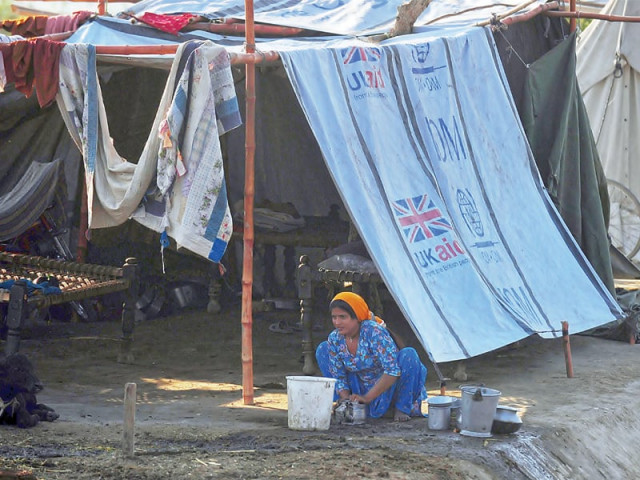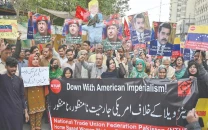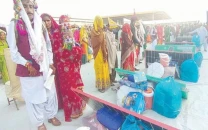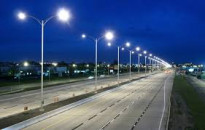Post-flood report: In Sindh, flood survivors brace for the worst
Stagnant water, lack of food and outbreak of disease mean a disaster in the making.

Khatoon’s brother-in-law recently lost his one-year-old daughter to malnutrition and she fears her own 14-month-old twin daughters may face the same fate if proper food is not provided to them.”Look around us, there’s nothing but stagnant water. It has made our lives miserable. I am desperately waiting for the day when my children and I can manage a good sleep,” she says.
The Peoples Accountability Commission on Floods (PACF) - a network of volunteers working for the flood-affected communities of Sindh - issued its latest report on Friday, revealing the plight of the people living in relief camps and negligence on the part of government.

The major problem was drinking water. Due to outbreak of malaria, diarrhoea and respiratory diseases, the flood survivors, especially the elderly, children and women, have drastically lost weight and look anaemic.
“Three months have lapsed but the flood-affected families are suffering mainly due to the politicisation of relief efforts in the districts,” the report stated. For the four flood-hit districts, the Sindh government had released Rs50 million each. “There was no transparency on how this amount was spent. The flood survivors complained that the deserving were overlooked. The government officials were reluctant to share the details about the expenditures,” the survey determined.
In Jacobabad, six union councils of Garhi Khairo taluka are still unreachable. The district administration gave the excuse that tribal clashes and worsening law and order situation has made the area inaccessible. “A majority of the flood survivors were denied relief services due to a lack of political backing. Those who got the stuff were either affiliated with political parties or approached the district administration themselves. Even the tents were distributed through a “parchi” (chit) system,” the report alleged.
Around 80 per cent area in three union councils of Jacobabad are still under water. The floodwater has not yet receded despite claims of dewatering made by the district administration.
The majority of flood-affected communities lost their Kharif crops and are now unable to sow the Rabi crop due to submerged fields. “It looks we will even not be able to cultivate the upcoming Kharif crop,” the study quoted Rasool Bux Khoso, a farmer.
The government established the district review committees (DRCs) to redress the issues faced by flood survivors but as political activists were included as members, the committees failed to serve their original purpose, the report alleged. “In most areas, the committees, which are also supposed to monitor the instalments of Watan Cards are not functioning,” said Sikandar Brohi, the director of Participatory Development Initiatives.
In Kashmore, hundreds of villages in the Tangwani, Lashari, Cheel, Sohelyni, Gul Wali, Doulatpur, Kumb, Malheer, Gullanpur, Geehalpur and Kaiser Ali Khan Bilawal union councils are still partially inundated. The government had announced setting up mobile clinics but there was no sign of health services.
“Where shall we go? Our villages are submerged. I have lost two buffaloes, my house and a five-acre paddy crop,” said Muhammad Ismail Domki from Kashmore’s Tangwani town, complaining that the government was forcing them to evacuate the camps.
Published in The Express Tribune, December 15th, 2012.



















COMMENTS
Comments are moderated and generally will be posted if they are on-topic and not abusive.
For more information, please see our Comments FAQ